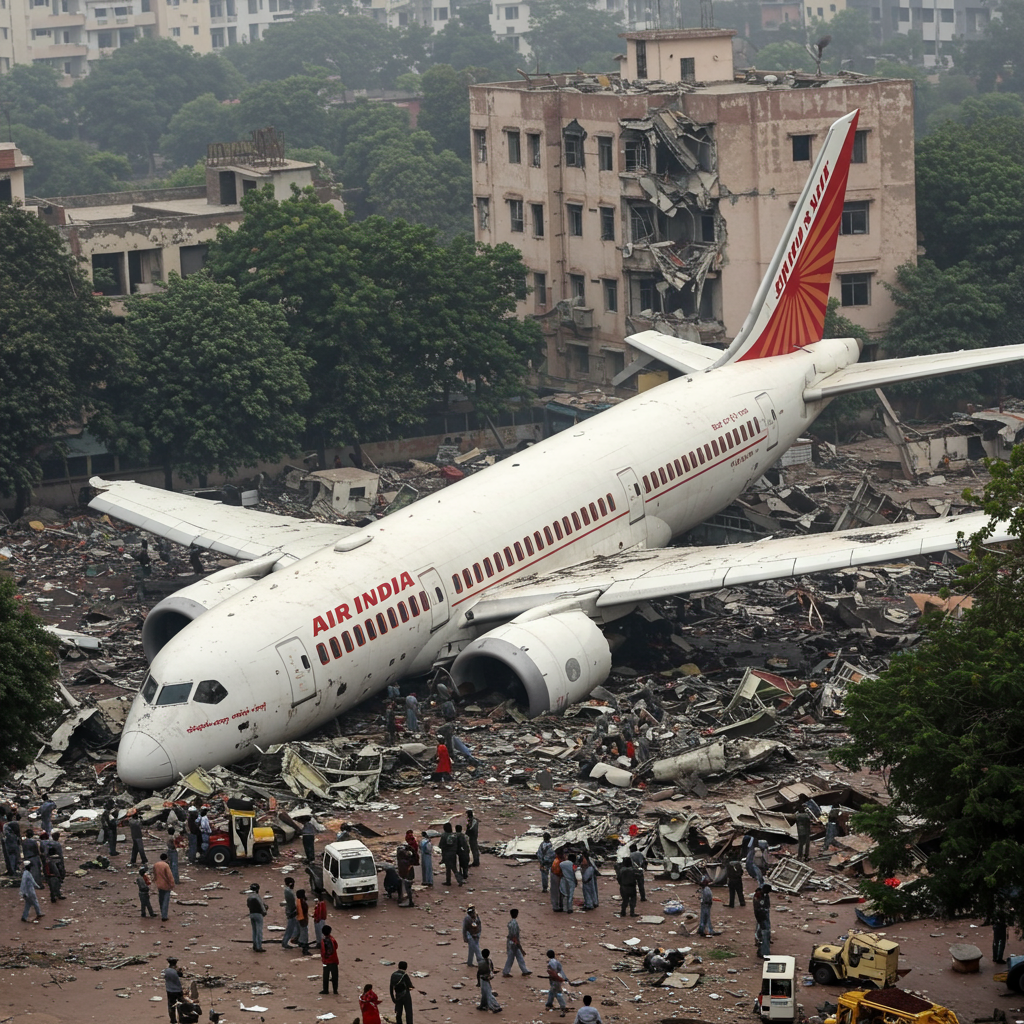Deadly Air India 787 Crash Follows Years of Whistleblower Warnings
A Boeing 787 Dreamliner operating as Air India Flight 171 crashed in Ahmedabad, India, on June 12, 2025, just seconds after takeoff. The tragic accident, which resulted in widespread casualties among the 242 passengers and crew aboard, and multiple fatalities on the ground as the aircraft impacted a doctors’ hostel, immediately cast a harsh spotlight back onto Boeing’s manufacturing practices and the persistent warnings from insiders who have long feared such an event.
The flight crew reportedly issued a “Mayday” call citing engine failure moments before the crash. Footage suggests the aircraft failed to gain altitude, flying low and slow before its rapid descent. This incident adds a grim chapter to the troubled history of the 787 Dreamliner, a plane hailed as revolutionary but plagued by allegations of manufacturing shortcuts and compromised safety standards.
Whistleblowers Raised Alarms for Years
For over a decade, engineers and quality control specialists have voiced urgent concerns about the 787, particularly the aircraft produced at Boeing’s North Charleston, South Carolina plant. These warnings, often directed to regulators, journalists, and airlines, centered on critical safety issues:
Hidden Structural Flaws: The composite materials used in the Dreamliner’s airframe, while lightweight, were suspected of concealing dangerous structural defects if not properly manufactured or repaired.
Untrained Workforce & Pressure: Allegations pointed to an inadequately qualified non-union workforce in South Carolina being pressured by management to ignore visible defects, install faulty parts, and prioritize speed over safety.
Foreign Object Debris (FOD): Whistleblowers repeatedly cited instances of metal scraps, tools, and other debris being left inside aircraft components, including critical wire bundles and electrical boxes, which could cause short circuits or engine damage. FOD was linked to significant engine incidents on 787 test flights in 2010 and 2016.
Substandard Parts: Reports included the use of parts from scrap bins and the presence of counterfeit components, including a major scandal in 2024 involving fake titanium used in some 787 and 777 jets.
Voices Silenced? The Fate of John Barnett and Others
Among the most prominent voices was John Barnett, a former quality manager at the Charleston plant. Barnett, who tragically died in March 2024 in circumstances ruled a suicide while giving deposition against Boeing, had starkly predicted that manufacturing sloppiness could take “ten or twelve years” to culminate in a fatal crash. He warned that not all planes were designed to fail immediately like the 737 Max, suggesting that latent defects could emerge over time. His family has since filed a lawsuit linking his death to stress from reporting issues at Boeing.
Other whistleblowers have echoed Barnett’s concerns and faced alleged retaliation:
Sam Salehpour: A Boeing engineer claimed workers were forced to “jump on misaligned fuselage parts” to fit them, risking premature fatigue and potential mid-air disintegration. He alleged being told “to shut up” after raising these concerns over three years.
Cynthia Kitchens: A former quality manager at the Charleston plant documented acute quality concerns about specific planes delivered to Air India between 2012 and 2013, identifying six of the eleven planes that most troubled her as going to the airline. She recounted a disturbing exchange where a boss dismissed concerns about flaws on planes destined for international customers, stating, “Cindy, none of these planes are staying in America, they’re all going overseas.”
- Richard Cuevas: A mechanic reported witnessing improper drilling at a supplier facility working on 787 parts and was terminated after submitting a complaint.
- prospect.org
- thecommunemag.com
- prospect.org
- www.businesstoday.in
- timesofindia.indiatimes.com
Perhaps most chillingly, an internal survey and hidden camera footage from the Charleston plant showed workers expressing reluctance to fly on the very planes they were building, citing rushed assembly and ignored issues.
A Pattern of Problems
The Air India 171 crash is not an isolated incident in recent Boeing history. It follows a series of high-profile failures and incidents since 2022, including the Alaska Airlines 737 MAX door plug blowout, and other fatal crashes involving older 737 models. The FAA has conducted audits revealing “gaps” in Boeing’s safety culture and a widespread fear of retaliation among employees who report problems. Deliveries of the 787 were even halted multiple times between 2021 and 2023 due to manufacturing defects, and investigations into faulty fuselage joins were reopened in 2024.
The specific Air India Dreamliner involved in the Ahmedabad crash was delivered in January 2014. While assembled in Everett, Washington, its critical mid- and aft-fuselage sections were produced in Charleston, where quality concerns were particularly acute, especially regarding planes delivered to Air India. An investigator on a documentary about the Charleston plant noted that employees were anxious about specific Air India planes from that period that required significant rework.
While the official investigation into the Air India 171 crash is just beginning, the tragedy tragically aligns with the long-feared consequences articulated by whistleblowers. Their ignored warnings highlight deep-seated issues within Boeing’s production culture that prioritized output and profit, potentially putting passenger safety at risk, particularly for aircraft shipped internationally. The crash serves as a stark reminder of the human cost when quality control is compromised.



